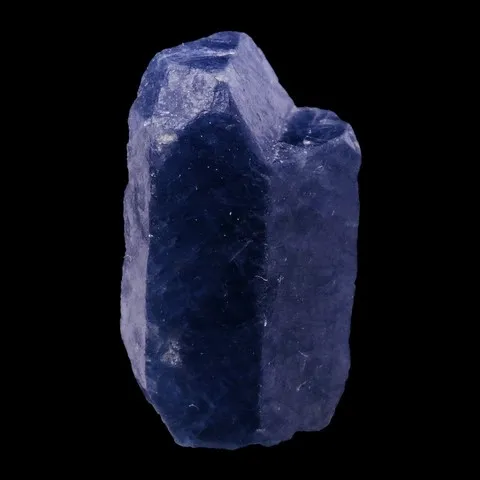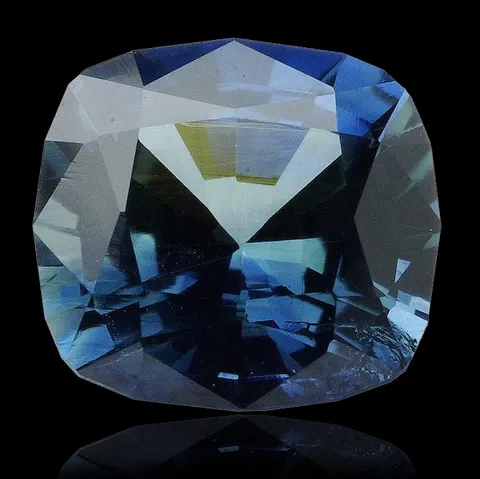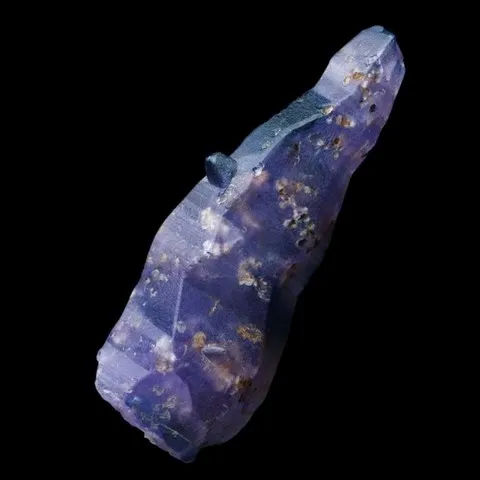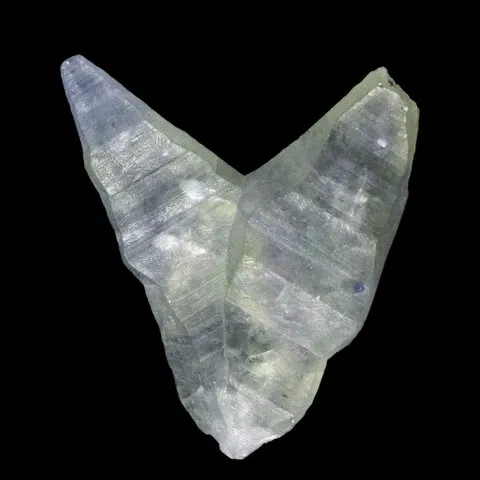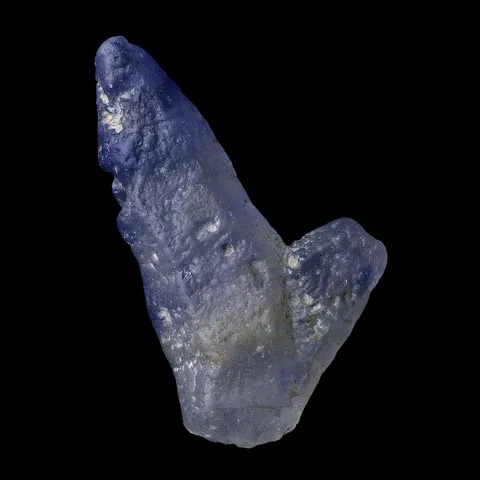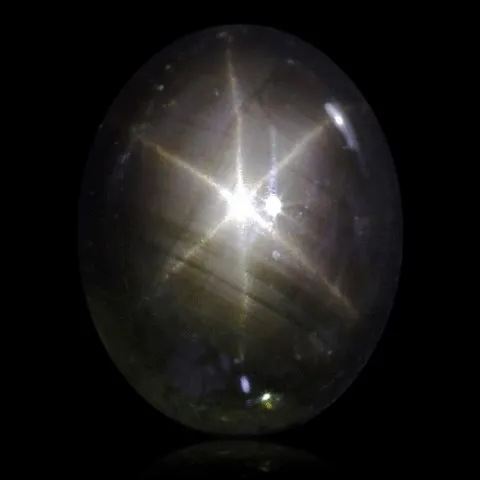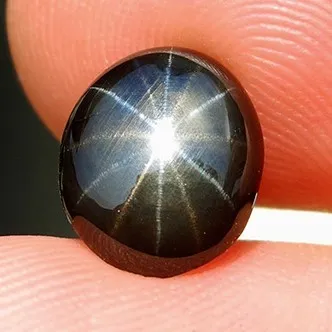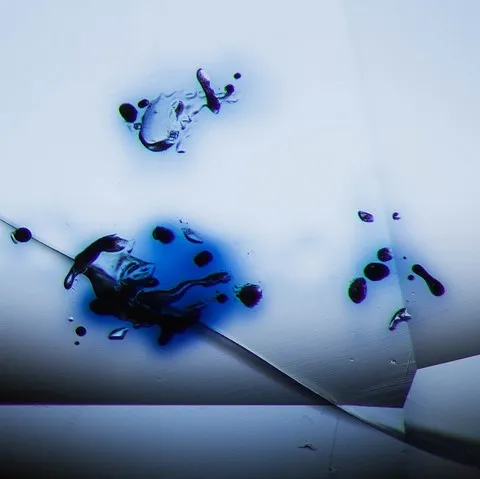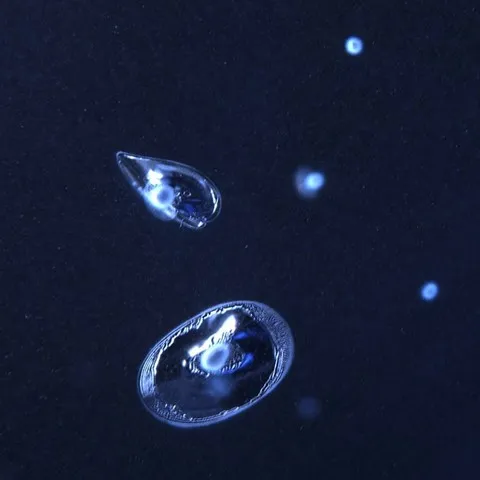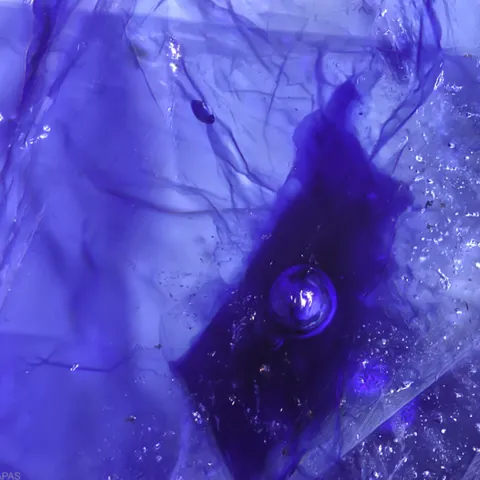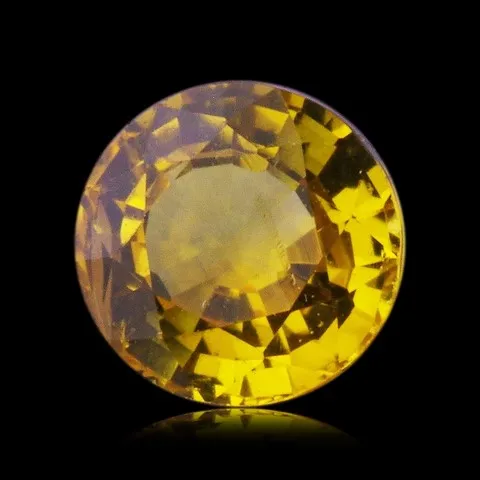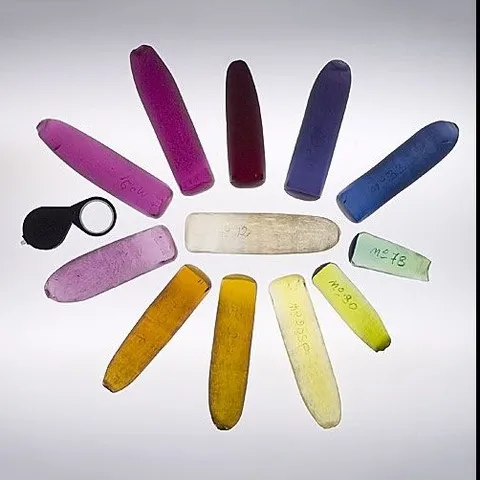SAPPHIRE
Class : Oxides and hydroxides
Subclass : Oxides
Crystal system : Trigonal
Chemistry : Al2O3
Rarity : Rare
The name "sapphire" designates a variety of corundum, of any color other than the red reserved for ruby. The most famous shade is deep blue, but green, yellow, pink-orange ("paparadscha" variety) or purple hues are not uncommon. The color of sapphire results from the presence of traces of iron and/or titanium in its crystal lattice, replacing aluminum. It owes its name to the Greek sappheiros, of Semitic origin, designating this mineral known since Antiquity. Sapphire is found mainly in gemmiferous alluvium. It is much more rarely known in primary deposits which can be very varied : syenites, nepheline syenites, certain monzonites and pegmatites, granulites, aluminous gneisses and mica-schists, calcareous and dolomitic rocks of contact metamorphism, in particular aluminous marbles, volcanic xenoliths, etc... Sapphires of volcanic origin (xenolith) having therefore stayed in basaltic lava are rich in iron and naturally blue or darker green than their counterparts of metamorphic origin. Sapphire is generally presented in pseudohexagonal crystals, they adopt the forms of acute or truncated pyramids, short prisms, barrels with sometimes striated faces ; it is also found in rounded grains. Sapphire is an esteemed mineral that has been tirelessly sought after since very ancient times. The great Indian poetic epic of the Ramayana briefly relates the birth of the sapphires : the two eyes, of a magnificent deep blue, fallen in the river, of the deity Daitya. Since then, these gems abound in the rivers of this country. In France, sapphire from Haute-Loire was very popular with ancient jewelers and goldsmiths. It is thus found on jewelry from the IInd century and the Gallo-Roman treasure of "the Lady of Lyon" includes a necklace of blue sapphires collected at Mont Coupet, near Langeac. This craze for Haute-Loire sapphires spanned the entire Middle Ages : they are mentioned in the lapidaries of Albert Le Grand (XIIth century) and in those known as King Philippe in the XIVth century. They adorn a number of religious jewels from this period and appear on the superb Gospel Book of the Apocalypse, today in the French National Library. Sapphires (out like rubies), were supposed to bring good luck and have multiple virtues as varied as "to purify the blood, resist venom, strengthen the heart, stop hemorrhages, etc...". These three-thousand-year-old beliefs will not begin to be scratched until 1696, in Nicolas Lémery's universal dictionary of simple drugs.
Sapphire in the World
Currently, the fields of gemiferous alluvium of Sri Lanka (Ratnapura and Elahera) provide the most beautiful stones : blue sapphires and "paparadscha", as well as green, yellow and sometimes star-stones. The Bombay Star, housed at the Smithsonian Institute in Washington, is a superb example of a 99-carat star sapphire found in these deposits. Perfect two-terminated blue crystals (main photo) can exceed 20 cm !
Alluvium from Cambodia (Pailin) and Thailand (Bo-Phloy, Trat and Ban-Kha-Cha), also produce superb stones. Australia, Colombia, Kenya, Tanzania and the USA also contain exploited deposits.
Sapphires in France
In France, Riou Pezzouillou, near Puy-en-Velay (Haute-Loire) provided centimetric green and blue stony crystals, as well as small gemmy crystals that could be cut, all associated with red zircons. These minerals come from the dismantling of a volcanic breccia with fragments of deep basement. Mont Coupet, a volcano located near Langeac (Haute-Loire), gave blue sapphires also from a volcanic breccia. We also find sapphires in the volcanism of Limagne in the region of Issoire (Puy-de-Dôme) of more than 100 ct, some of which sufficiently transparent have been cut into gems of more than 5 ct !!! In general, sapphire is found in most rivers intersecting volcanic rocks, it is very present in Cantal ; Sioulot (Mont-Dore Massif, Puy-de-Dôme) also provided superb gemmy crystals perfectly formed but which do not exceed a few millimeters.
Twinning and asterism
The sapphire can also present an asterism, one speaks then of star sapphires. When observed under the light of a spotlight, a star with 4, 6 or 12 rays appears on the surface of the gemstone. It is the reflection of light on inclusions of rutile and/or hematite that is at the origin of this phenomenon. Most often there are 6-rays stars and when the asterism is due to hematite, the sapphire is black. The fine needles of rutile are distributed in parallel along three axes which cross at 120° in the stone. Only the cabochon cut reveals the asterism of a gemstone. For this, the base of the cabochon must be parallel to the inclusions of rutile and/or hematite. Like all star stones, the most sought-after sapphires are those with a full star, well centered on the gem, and as precise and fine as possible.
Treatments of natural sapphires :
Due to its great importance in the gem market and its worldwide reputation for relatively low jewelry quality production, sapphire is extensively processed and synthesized. We will attempt below to establish an exhaustive list of everything that is done around this mineral.
The heating :
Around 95% of faceted natural sapphires on the market today are heated. This process is used to develop or intensify color by removing or toning down zoning. This treatment can also affect the clarity of the stone by removing or reducing inclusions. The toast is very widely accepted by the market. This explains the great value and rarity of untreated stones. This treatment can generate discoidal fractures around the inclusions present in the sapphire ; blue halos can also appear around the inclusions of rutile due to the diffusion of titanium in the host sapphire, be careful however the signs of heating can also hide a diffusion or a fracture filling (detailed below). It should also be borne in mind that sapphires of volcanic origin are naturally heated by the magmas which rise them from the depths...
The controlled and slow heating and cooling can also generate an asterism in some translucent stones by allowing the epitaxial (oriented) recrystallization of rutile within the sapphire itself.
The fracture filling :
It is a technique developed in the 1990's to make certain highly fractured rubies from Mong Hsu (Myanmar) marketable. This technique consists of injecting at high temperature and "healing" the fractures with a glass (generally lead glass) of the same refractive index as the sapphire in order to restore all its transparency. The value of sapphires treated with this technique is strongly affected. It is not always easy, especially for the neophyte, to spot this treatment. Usually large pink, orangy-red or blue sapphires whose natural fractures reach the surface of the gemstone are treated with this technique.
This treatment can also be carried out at room temperature by injecting colored oil or epoxy, the treatment is then not stable.
Beryllium and titanium diffusion :
This treatment is relatively new and is very difficult to spot, it consists in bringing the gemstone to a very high temperature in the presence of titanium in order to diffuse this titanium inside the stone and modify its color. This treatment is generally carried out on stones whose color is not very intense in order to boost it. It is possible by immersing the sapphire in water, to see that the diffusion has not reached the heart, we then note a blue halo on the outer edge of the gemstone, which loses intensity towards the center. Likewise, the blue color is found concentrated on the edges of the gemstone. This operation is also carried out with beryllium which penetrates more easily into the heart of the stone to give pink-orange hues. On small sized gemstones the treatment penetrates to the heart, it is then impossible to identify it without advanced laboratory technique. This treatment can generate milky UV fluorescence.
Synthetic sapphires :
The flame-fusion (or Verneuil) :
It was a French scientist named Auguste Verneuil who developed this process in order to synthesize ruby in the laboratory as early as 1902. At that time it was impossible to differentiate between true and false, which considerably affected the value of this gemstone. The process also makes it possible to synthesize blue sapphires, alumina and titanium powder is flame-melted in an oven, the molten grains fall on a rotating base, which forms a "boule" of synthetic sapphire. This process is also used to manufacture any type of corundum or spinel, it allows to create perfectly transparent gems very clean to the eye. However under magnification, these synthetic gemstones present curved growth lines, which one does not meet in nature ; the gem also has micro air bubbles inclusions, which are also totally absent from natural gemstones. The diagram on the right shows the process - Copyright Peter Johnston / GIA
The pulling :
The so-called "pulling" method appeared in 1918. It made it possible to produce synthetic rubies with less internal growth marks but also of much larger size (40 cm long and more than 10 cm wide). Pulling is a more complex and expensive technique to implement, but it also allows synthetic crystals to be produced more quickly. The appearance and expansion of lasers in the 1960's greatly contributed to the development of this method in order to obtain crystals with as little internal defect as possible. This process is also known as the "Czochralski method". It consists in melting alumina and titanium in a crucible, a small crystal of corundum is attached to a stick and then brought into contact with the surface of the molten liquid in order to initiate the growth process. The stick turns on itself and is withdrawn from the surface of the liquid as the sapphire crystallizes in order to form, like the Verneuil method, a "boule". Gems other than ruby are synthesized via this method such as alexandrites, chrysoberyls, star rubies or not, as well as YAG (yttrium-aluminum garnets) and GGG (gadolinium-gallium garnet) which mimic the diamond. Diagram on the right showing the process - Copyright Peter Johnston / GIA
The flux growth :
The so-called "flux growth method" was developed in the 1930's in order to synthesize the emerald, today it also makes it possible to synthesize other gems such as rubies, sapphires, alexandrites and spinels... This method is very expensive and slow. Nutrients are dissolved by chemicals in a gold or platinum crucible and then heated to a high temperature. They are then cooled very slowly so that crystals form. Characteristic inclusions in wispy veils are still visible.
Fake sapphire crystals :
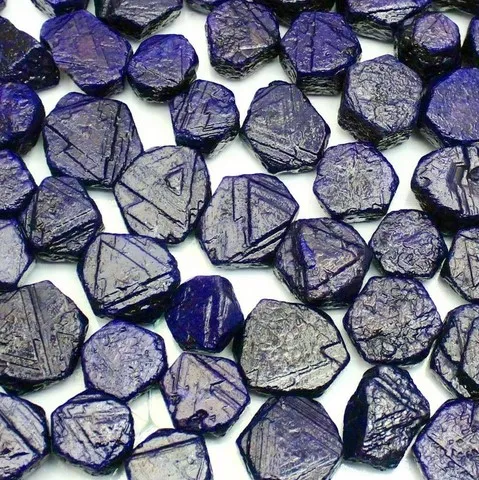
The large crystals of African corundum can be coated with a blue plastic to give them an attractive appearance. Originally these crystals are gray-blue or even brown : read our article on this subject here : Rubies and dyed sapphires
Hardness : 9
Density : 3.98 to 4.1
Fracture : Irregular to conchoidal
Streak : White
TP : Opaque to transparent
IR : 1.759 to 1.772
Birefringence : 0.008 to 0.009
Optical character : Uniaxial -
Pleochroism : Weak
Fluorescence : Variable
Solubility : None
Magnetism : None
Radioactivity : None


